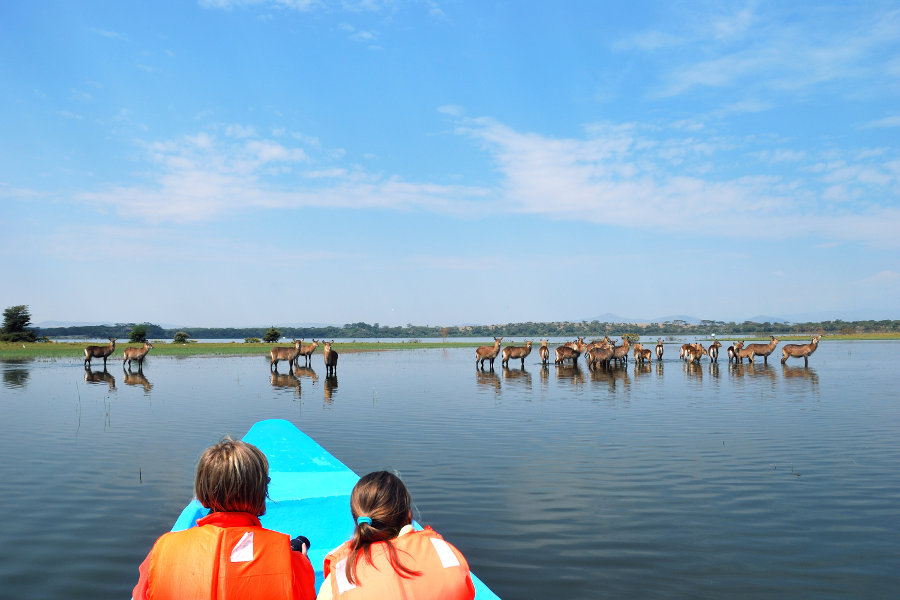How Many Days Do You Need For A Safari In Kenya? Kenya should be your only stop if you only have time to visit one African nation. The iconic Maasai Mara is one of the most well-known wildlife reserves in this East African Region. This vast reserve is teeming with lions, cheetahs, elephants, zebras, hippos, and other wild animals. Another highlight is Lake Nakuru, which has some of the most beautiful scenery in the nation. Meanwhile, Nairobi, the bustling capital, is a melting pot of cultures and ethnicities.

PLANNING YOUR SAFARI TRIP TO KENYA
Travelers flock to Kenya in droves to go on safari and take in the vibrant Maasai culture. On either brief tours or longer, more leisurely ones, there are ways to accomplish both. The number of days you have available will determine how far you can travel outside the city because the majority of travelers will fly into Nairobi, the capital. On shorter trips, it makes sense to stay close to Nairobi because there are still some great opportunities to see wildlife within a couple of hours of driving. You can travel farther and farther afield on longer itineraries.
Regardless of how long you plan to stay in Kenya, it’s crucial to time your trip to coincide with the best season for the sights and activities you want to experience. You can only go on safari during the dry season if you want to see the Great Migration or climb Mt. Kenya. Additionally, because it’s peak season, prices will be the highest. Travel to Kenya off-peak to save money, but be aware that the weather won’t be ideal for viewing wildlife. You must take safety precautions into account if you plan to climb Mount Kenya, and visiting during the off-season is not a good idea.
HOW MUCH TIME SHOULD I SPEND IN KENYA?
If you’re unsure of how long to stay in Kenya, we advise that you extend your stay as much as you can. Although this is not an option, our recommendation is that you book a trip to Kenya that lasts at least five days and takes in the main attractions of the region’s southern safari circuit. Even though there are shorter safari tours available, it might not be worthwhile to visit Kenya for just a long weekend.
If you have more time, we advise going on a trip that lasts between ten and fourteen days. Both well-known and obscure wildlife destinations are adequately covered by this time frame. If you have more time, you can go further north to Samburu to see endangered animal species like the Somali ostrich and the East African Oryx.
5 DAYS IN KENYA
During a five-day visit to Kenya, choose the quickest and likely most well-liked wildlife safari loop. Go on a safari in the Maasai Mara, where the Big Five call home, from Nairobi. Explore the wildlife reserve for two days before moving on to Lake Nakuru. Giving Lake Nakuru at least one day is what we advise. However, just in case you are an enthusiastic birder, you might want to stay two days here, where countless bird species congregate every year and tens of thousands of flamingos line the shores. On the final day, take a drive back to Nairobi to catch your flight home.
7 DAYS IN KENYA
If you plan to stay in Kenya for seven days, you can fit a couple more places into your itinerary. From Nairobi, take a drive south to Amboseli National Park, known for its sizable herds of wild elephants and breathtaking views of Mount Kilimanjaro.
Continue on to Lake Naivasha to see Mount Longonot, an extinct volcano. Take an off-road safari through the Maasai Mara’s grassy plains. After a few days and a safari, you can go to Shaba National Reserve, where sizable prides of lions congregate during the daytime beneath thickets.
10 DAYS IN KENYA
If you intend to spend ten days in Kenya, in addition to the places mentioned above, you should also add the Aberdares range, which is nearly four hours away from Nairobi. As you hike through the mountains, you’ll come across majestic peaks, gushing waterfalls, forested ravines, and vast moorlands. If you’re lucky, you might have the opportunity to see mountain bongos and long-haired colobus monkeys.
You can continue on from there to the Ol Pejeta Conservancy, which has the highest number of large mammals in Kenya, including the rare reticulated giraffe and Grevy’s zebra. Before heading back to the capital, stop one last time at Lake Naivasha.

2 WEEKS IN KENYA
Nine stops can easily be made on a two-week trip through Kenya to get you from the southern to the northernmost point of the nation. Before proceeding to your first destination, the archaeological site of Olorgesailie, spend a day taking in the sights and sounds of the nation’s capital. Here, you can take a guided tour and discover more about the lifestyle of the earliest Homo sapiens. After that, proceed to Magadi Lake and take in a picnic lunch at the Soda Ash hot springs.
Give two days to Sleeping Warrior Hill and Lake Elementaita, both of which are in the Great Rift Valley. Numerous animal species, such as zebras, gazelles, elands, and the endangered Rothschild giraffe, find refuge along the lake’s shores. Less than three hours from the lake are Lake Bogoria’s hot springs and geysers, in case you want to give your tired muscles a break.
Then, change up your itinerary by going to Iten, which is home to some of the world’s top distance runners. Before returning to the capital, see Lake Turkana and gain more knowledge about why it serves as a significant crocodile breeding ground.
FACTORS AFFECTING HOW LONG YOU MIGHT STAY ON KENYA SAFARI
Numerous factors will determine how long your Kenya safari lasts. Among the most important ones are:
Your budget: When planning an African safari, this may be the most important factor to take into account. A number of variables affect how much a safari costs.
The number of parks you will be visiting
The type of accommodation you will be using
Whether you will have exclusive transport or share it with other travelers
Travel time between parks: The travel time between parks can occasionally equal an entire day. When figuring out how much time you’ll need for your Kenya safari, you must consider the time it will take you to travel from one park to the next. Although flying on one of the light aircraft that service these parks can cut down on the amount of time you spend traveling between them, doing so will add significantly to your costs and may not be feasible for many visitors.
Jetlag: You must account for the time it will take you to acclimate to East African time once you get there. For visitors from the USA, daytime in East Africa is equivalent to nighttime in their home countries. Give yourself a day or two to rest once you get there if you want to enjoy your safari without feeling grouchy and exhausted. You can stay in Nairobi or Arusha during this period.
Beach time: Before returning home, many visitors enjoy spending a few days on one of East Africa’s white sandy beaches.


